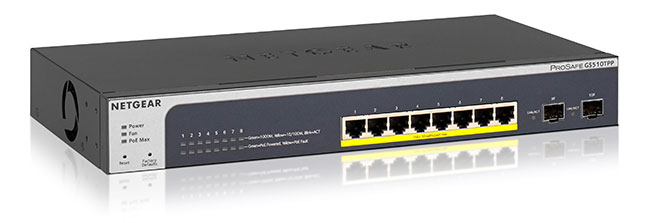How to Narrow Down Connectivity Options for Your Next Design
Connectivity has joined cost, power consumption, size, and availability on the list of characteristics engineers must consider when sketching out a new design. It seems almost any device—be it a watch, thermostat, or toaster—is made better by having a connection to the outside world that changes it from “dumb” to “smart”. Little wonder, then, that the ways of implementing that connectivity are numerous and diverse, making it a challenge to pick the best solution.
Before honing the choice of connectivity solution, which is typically based on technical performance factors such as range, throughput, and power consumption, the designer first needs to answer three fundamental questions:
- Should the connection be wired or wireless?
- Should it be based on a standard or proprietary technology?
- What network topologies does the solution need to support?
Wired or wireless?
The convenience and mobility advantages of wireless connectivity are well established, but sometimes those glaring advantages can blind engineers to the drawbacks. For example, because it must adhere to the immutable laws of physics, any wireless link must trade-off power consumption, range, and throughput. Moreover, RF signals are subject to considerable attenuation from objects such as walls, ceilings, furniture, and people. Throw in interference from other radio signals—muscling in on the same frequency—and the performance of a wireless link can quickly degrade to a pale shadow of its spec sheet.
 Figure 1: PoE hubs have the advantage of being able to deliver power as well as data. (Image source: Netgear)
Figure 1: PoE hubs have the advantage of being able to deliver power as well as data. (Image source: Netgear)
Wired links address many of these challenges. Signal integrity and throughput are generally immune to outside interference, and range—while limited by the length of the cable—is consistent. And for a given power consumption, the throughput of a wired connection will be significantly superior to that of a wireless equivalent. Some wired systems (examples include Power-over-Ethernet (PoE) and USB) also offer the advantage of delivering power as well as data (Figure 1).
The key downsides of a wired connection are the cost and inconvenience of putting the infrastructure in place, increased complexity, and difficulty in implementing upgrades. And scaling up a wired network involves significant disruption as more cables and connectors need to be installed.
Essentially the choice between a wired and wireless connection is determined by the trade-off between throughput, signal integrity, reliability, mobility, scalability, and cost.
Standard or proprietary?
There are many very good proprietary connectivity solutions on the market. Some examples are so widely used that they are almost accepted as a standard, even though they are licensed from a single vendor. Proprietary connectivity solutions are typically much faster to market than standard alternatives. They are typically engineered to meet just a few key parameters—for example, power consumption, throughput, or mesh support—rather than aiming for the “one-size-fits-all” approach, with its inevitable trade-offs, endemic to standards-based technology.
Updates and enhancements for proprietary technologies are less subject to the vagaries of “design-by-committee”, so they tend to come more frequently. And if designers intend the application to only connect to a device using the same proprietary connectivity solution, they can be confident the technology will operate largely trouble-free. If the connection does prove unreliable, solving problems with a proprietary link is simplified by only needing to collaborate with a single vendor. Finally, proprietary links tend to fly under the hacker’s radar, making them less prone to security breaches, and in the rare case of an attack, the vendor tends to react quickly to patch the problem.
The key advantage of standards-based solutions comes from a competitive multivendor environment which ensures the OEM has a choice of supply options. That multivendor environment also encourages widespread promotion, which boosts connectivity mass-market acceptance, generally leading to a more lucrative sector for end-product vendors.
Standards-based connectivity solutions also ensure interoperability or guaranteed connectivity between end-products from any supplier adopting the technology. (Well, almost guaranteed as cases of “interoperable” devices refusing to play nicely together are not unknown). That’s good for consumers and further accelerates market acceptance.
Network topology support
The choice of connectivity technology is also influenced by the network topology it needs to satisfy. Most solutions can cope with a straight peer-to-peer connection whereby two connected devices communicate directly, and either can act as a central or peripheral device.
A “star” network where a central device connects with several peripherals and offers greater flexibility is more complex and can’t be supported by all connectivity technologies. An example is a Bluetooth wireless local area network (LAN) made up of a smartphone “hub” connected to a wireless speaker, wearable, action camera, and weather station, or a USB hub wired to a PC, camera, portable hard disk, and printer. In these arrangements, the devices connected to the hub can’t link directly to each other, and communication is always via the hub.
 Figure 2: Wireless mesh networks powered by Bluetooth LE bring built-in redundancy, security, and reliability to smart lighting installations. (Image source: Signify)
Figure 2: Wireless mesh networks powered by Bluetooth LE bring built-in redundancy, security, and reliability to smart lighting installations. (Image source: Signify)
A derivation of the star network is a “tree” network where peripheral devices are connected to one of several hub devices, which are connected to each other.
Mesh networks bring a greater level of flexibility, albeit at the cost of complexity (especially as the network grows), which can only be supported by certain connectivity solutions. In a mesh arrangement, devices form nodes and are connected to all other nodes. Communication between any two nodes is assured. A mesh network brings some key advantages, notably built-in redundancy (a faulty node can easily be bypassed), security, and reliability.
An example of a wired mesh network is one formed by Ethernet switches communicating via Internet protocol (IP) routing. A wireless network example is a smart lighting network using the Bluetooth LE protocol (Figure 2).
Conclusion
Connectivity dramatically increases the capability and lifespan of products by enabling two-way communication. Devices can be linked to other units or a central supervisor to report their status or what’s happening around them or to receive instructions or firmware updates.
But choosing how to link a device to the outside world is a challenge. The solution comes from considering three basic parameters: wired or wireless, standard or proprietary, and type of network topology support. These parameters will narrow down the options from the major suppliers in DigiKey’s catalog to a manageable shortlist.

Have questions or comments? Continue the conversation on TechForum, Digi-Key's online community and technical resource.
Visit TechForum










